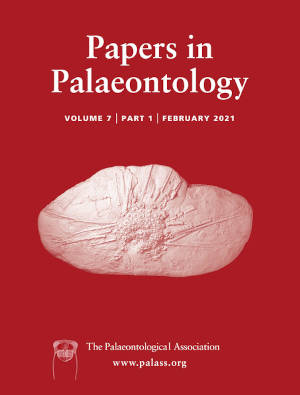Reg. Charity No. 1168330

Porolepiforms represent a clade of Devonian stem lungfishes, divided into the cosmine-bearing and probably paraphyletic ‘Porolepidae’ (e.g. Porolepis, Heimenia) and the cosmine-free and stratigraphically younger Holoptychiidae (e.g. Holoptychius, Glyptolepis, Laccognathus). Data on the dermoskeleton are available for both groups, but are more limited for ‘porolepids’. Here we present new information on the ‘porolepid’ Durialepis edentatus from the Emsian (Early Devonian) of Germany based on micro-computed tomography. The material comprises an articulated skull of a single three-dimensionally preserved individual. The arrangement of the cheekbones of Durialepis edentatus recalls that of Porolepis brevis, with the occurrence of two subsidiary squamosals. However, the parieto-ethmoidal and postparietal shields are roughly equal in size, a condition similar to that of Glyptolepis groenlandica and intermediate between Porolepis brevis and holoptychiids. A large parasymphysial tooth plate displays five tooth rows with three large tusks in the median row, another intermediate arrangement between the primitive condition of Porolepis sp. (eight rows) and holoptychiids (five or fewer rows). Remarkably among porolepiforms, this dental plate is perfectly symmetrical. Despite the occurrence of cosmine and rhombic scales, the combination of traits displayed in Durialepis deviates from Porolepis in several ways, reflecting features shared with holoptychiids to the exclusion of other ‘porolepids’. Durialepis edentatus is thus a key addition to our knowledge of ‘porolepid’ anatomy. Because Durialepis edentatus preserves much of the cranial and postcranial skeleton in a single individual, it represents a suitable early dipnomorph representative for inclusion in phylogenetic analyses on sarcopterygians and early osteichthyans.